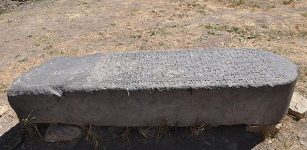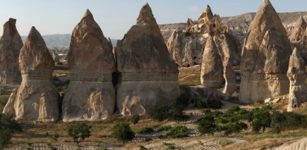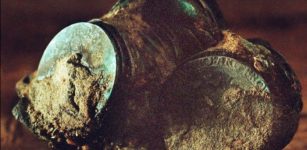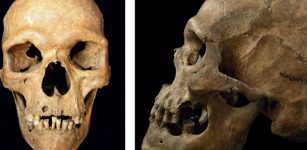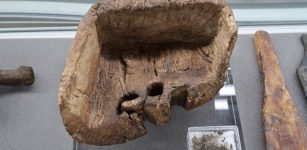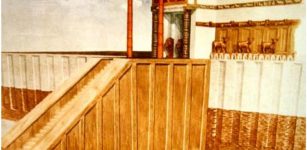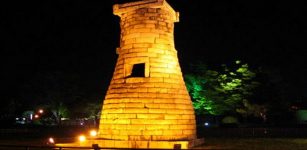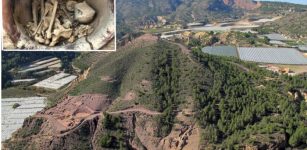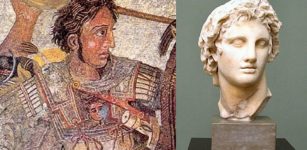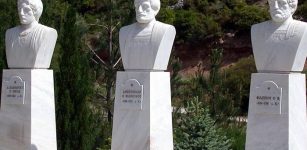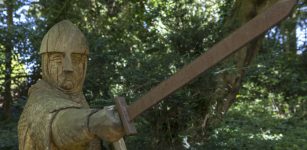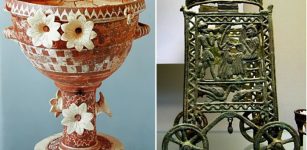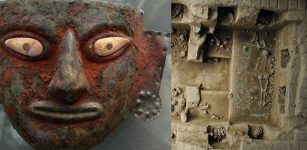Two Huge Olmec Reliefs Recovered After Anonymous Tip
Jan Bartek - AncientPages.com - After having received an anonymous tip, INAH scientists have been able to recover two precious and huge Olmec reliefs in Tenosique, a municipality in the state of Tabasco, Mexico.
Archaeologists have long debated what connection the Olmec had with other neighboring Mesoamerican cultures, what language they spoke, and just who they were.
Credit: INAH Tabasco Center
When the Spaniards arrived, the Olmec civilization had already emerged and disappeared. Even today, much of the Olmec history is shrouded in mystery. It is believed that this remarkable civilization existed between 1200 BC - 400 B.C.
Every artifact that can shed more light on the Olmec civilization and its presence in Mesoamermost is of the greatest importance.
Both recovered Olmec reliefs represent local rulers of the Middle Usumacinta region and date to the late Olmec horizon 900-400 B.C.
According to Carlos Arturo Giordano Sánchez Verín, director of the INAH Tabasco Center, scientists received an anonymous report informing that these reliefs were on a property in the capital of Tabasco, which its owner, Carlos Giordano Verín, visited, and its deputy director, José Luis Romero Rivera, who confirmed its authenticity.
During the XI International Congress of Mayanists, held in Chetumal, Quintana Roo, a specialist, received images of these monuments that, due to their characteristics - are similar to a circular relief recorded at the beginning of the year 2000 in the Belén neighborhood of Tenosique. It suggested the artifact must have come from this region of Tabasco, on the border with Guatemala.
The reliefs, made of limestone have a diameter of about 1.40 meters. They share similar iconography: in the upper part and surrounded by celestial jaws, a diadem formed by four corncobs stands out, and in the center, a mirror with the so-called "Olmec cross." (glyph that marks the attire of the elite and is associated with the figure of the jaguar); footprints can be seen on the sides; in front, the arms crossed and, in the middle part of the scene, the face from which the "grumpy mouth" stands out, which alludes to the roar of the jaguar.
Each of the reliefs weighs 700 kilograms. The two objects will now be examined, before being transported to the Museum of the Archaeological Zone of Pomoná, in Tenosique, which houses the most extensive collection of this type of relief. Archaeologist Tomás Pérez Suárez explains that these monuments come from the Middle Usumacinta region.
Among the reliefs known from the late Olmec horizon (all from informal excavations), when La Venta emerged as the guiding center of this civilization, five of them represent figures of "contortionists," one of which comes from Balancán and is exposed in the Regional Museum of Anthropology, in Villahermosa; another one, from Ejido Emiliano Zapata, and is in the Pomoná Site Museum; and three, from Tenosique, considering the one registered in 2000 and these last two.
"The five monuments have in common the representation of large faces, possibly of local rulers, who also practiced contortionism as a ritual. The position in which they appear portrayed reduces the irrigation and oxygenation of the blood to the brain resulting in the individual achieving a trance-like state.
"It is possible that these faces evolved and derived in the Mayan ajaw altars, such as those of the Caracol site, in Belize, which tells us about the permanence of this theme for more than three centuries, already for the Early Classic and Late Classic periods. The word ajaw means 'he who shouts', 'he who commands', 'he who orders'; and in these Mayan monuments, the mouth stands out, a feature that must come from Olmec times, especially from these circular reliefs of 'contortionists' that are portraits of local chiefs". (495 to 790 AD)," the INAH scientists explained.
Credit: INAH Tabasco Center
The specialist in the history of Olmec archeology concludes that this stylistic transition is understood because the coastal plains of Tabasco underwent a process of "Mayanization" around 500-300 BC, which accelerated sometime later with the rule of Palenque, Chiapas, over the area, which cornered the Mixe-Zoque speaking groups.
See also: More Archaeology News
The recovery of the Olmec reliefs by the INAH is one more example of the fulfillment of its primary tasks, among which is the legal protection of the cultural heritage of Mexico, in addition to recognizing the citizenship that values and monitors this legacy that belongs to the nation, which allows it to be preserved for the knowledge and enjoyment of future generations.
Written by Jan Bartek - AncientPages.com Staff Writer



